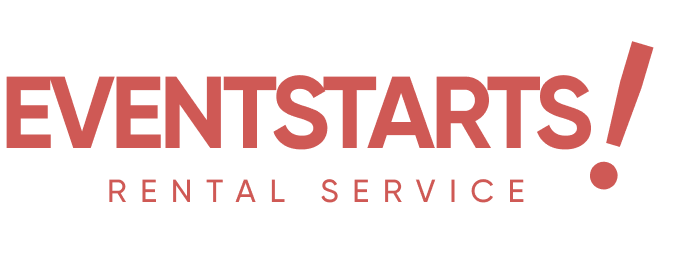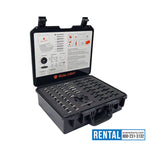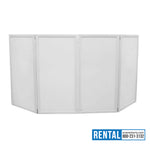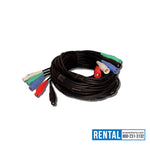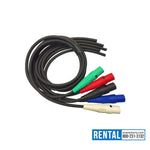You have no items in your shopping cart.
Why Modular Staging is a Game-Changer for Event Setup
Live events need to be flexible, fast, and safe because the world of these events is always active. No matter if it’s an outdoor concert, a fashion event, or a business conference, you need a portable stage platform that works well and you can rely on. This is where Modular Staging has completely changed the game for event professionals around the world.
It is no longer necessary for stages to be huge and individually assembled, using up multiple days. With Modular Staging, event organizers can now build custom layouts quickly, adjust configurations on the fly, and reuse components across multiple events. In the blog, we’ll look into the way this works, the various kinds of modular platforms, and the reasons many organizers and technicians are choosing it.
What Is Modular Staging?
Modular Staging refers to staging systems built from standardized, interchangeable platforms and support components. Depending on the requirements, the units can be put together in different ways and sizes for an event.
Because they are built with aluminum and have sturdy non-skid covers, they can be set up and taken apart in no time. You can think of them as LEGO blocks designed to support a lot of people, artists, and vehicles.
Key Benefits of Modular Staging
1. Adaptability in the Design
There are always differences between events. A jazz performance can sometimes use only a low riser, but a music festival usually has many stage levels and well-planned walkways. Besides, with the modular approach, you can:
Raise or lower stages and make them the right size.
Design the floors using custom shapes like round, L-shaped, and catwalk ones
Put in ramps, stairs, or trap doors.
Design buildings that have several levels with ease
Because of this design freedom, the stage can be built to suit the meaning or aim of your event much better.
2. It takes less time to install and break down the set.
Having enough time is extremely important in creating events. One of the biggest advantages of Modular Staging is its quick setup:
Very few (or even no) tools are needed to assemble the furniture.
Cutting down the number of crew members is possible.
You can easily transfer soybeans from one place to another using typical trucks and trailers.
Having this technology saves money on labor and limits breaks for the venue, especially if the place hosts many events in a short period.
3. Scalability
Do you need more room for your performance? Just create accounts on extra networks. Next stop might be a smaller vehicle. Use fewer. It is very suitable for rental companies and event producers dealing with several shows at various places.
There’s no fixed setup required; you can update your cloud requirements when necessary, and store or access resources without buying new hardware.
4. Safety and stability are both important.
These modern pre-built platforms are designed to prevent hazards during use.
Surfaces made to prevent slips
Frames built to withstand equipment as well as foot traffic
Feet on the shoes that can be adjusted for balance on rugged ground
Network cable hidden in the system
No matter if the performance is inside or outside, everyone on stage is protected.
Common Modular Staging Components
Here’s a breakdown of what makes up a typical modular staging system:
The main platform used in stage design is normally 4’x4’ or 1x2 meters and is called stage deck.
Adaptable legs or risers are types of supports for any barbell.
Braces give support to the teeth.
You should have guardrails to stop anybody from falling from an elevated stage.
Equal access and following ADA guidelines should be guaranteed for everyone with steps and ramps.
Skirting and facades are useful for giving a clean look and hiding electrical lines and gadgets.
Tiles can be used together or individually, so the choices for designing are endless.
Types of Events That Use Modular Staging
The music industry is made up of concerts and music festivals.
Create the main stages, add the side wings, and form the front-of-house platforms. Modular stages support a lot of movement so artists can enter at different times and from various areas.
Fashion Shows
No matter the location, from an indoor hotel ballroom to an outdoor area, these movable fixtures can be adjusted for a given venue.
Events for Corporations and Businesses
Make sure to make space for speakers, products, or panelists by using platforms. Businesses use them to reinforce a brand and combine graphics with video displays.
Schools are active in the community in many ways.
There is no problem making changes to the stages for plays, graduations, and award ceremonies. What’s more, they are really light and it’s easy to keep them handy all the time.
Events and rituals in the religion
Modular staging is perfect for temporary altar platforms, choir risers, and multimedia presentations.
Movies and television shows are filmed in different environments called sets.
You can set up CHROMA CLOAK Xe in a short time and it can be used for building scenery, cameras, or green screens.
Air conditions in different areas should be considered.
Indoor Use:
Make sure to concentrate on both the look and the sound of the room.
Smaller-sized displays for people who are seated
Skirting that is part of the trim
Outdoor Use:
Outdoor materials and surfaces multiplied by anti-skid coverings
Options for ballast to lessen the effects of wind
Leveling the platform for over uneven surface
Always ensure that you check rules about height, weight, and permissions when staging events outdoors.
Why Production Companies Prefer Modular Staging
Event production companies thrive on efficiency, and modular staging systems allow for:
Manufacturers should focus on using the same components as much as they can and not build custom parts in every single model.
When you want fast service, multi-day events are ideal.
The stage platform serves as a seating base, place for speakers, or drum set stand.
Thanks to being flexible, these businesses see more profits, use less storage, and satisfy clients more easily.
Real-Life Applications
In this case study, I focus on a music festival that tours various places.
They came up with a mobile stage setup that matches the size of a regular 20-foot trailer. It takes less than 2 hours to set up, and it appears at more than 30 cities every year.
The second case study looks at Pop-Up Fashion Week.
A modular stage company was hired to put in catwalks at unique places, such as train stations and museums. In turn, the area receives nice-looking signs and there is less trouble for everyone using public spaces.
Case Study 3 is called The Church Production Team.
Because their congregation was increasing, the church required a stage that could adjust to different events. The team opted for modular staging so they could reconfigure layouts for concerts, plays, and weekly services.
Tips for Choosing the Right Modular Staging
See what is allowed: Determine that the system supports all the equipment and people in your event
Check all the doorways and consider the sizes of the elevators
You can enhance your brand with a printed skirting, beautiful lighting, or a backdrop.
Pick a system that will be suitable as your needs increase
Connect with a reliable rental business that offers all the necessary assistance.
Is Buying or Renting the Better Way for You?
Rent if:
It’s only necessary to rent it for a special occasion.
You are looking for machines to be set up by a professional entirely.
You have to set up the system to your requirements in a special way.
Buy if:
You arrange events on a regular basis.
Make sure you get full control over the creative process
Storage and transportation are an option for you
Some places and AV companies purchase important gear and rent additional things as required.
Conclusion
Modular Staging is more than a trend — it’s a reliable, flexible, and cost-effective solution for modern event production. With modular platforms, you can set up stages for any event, from huge concerts to small company events, always in a safe and engaging way.
To learn more about modular staging options, or to request a custom solution for your next event, visit EventStarts.com. We can design your stage in any shape, size, or area for the best outcome.
